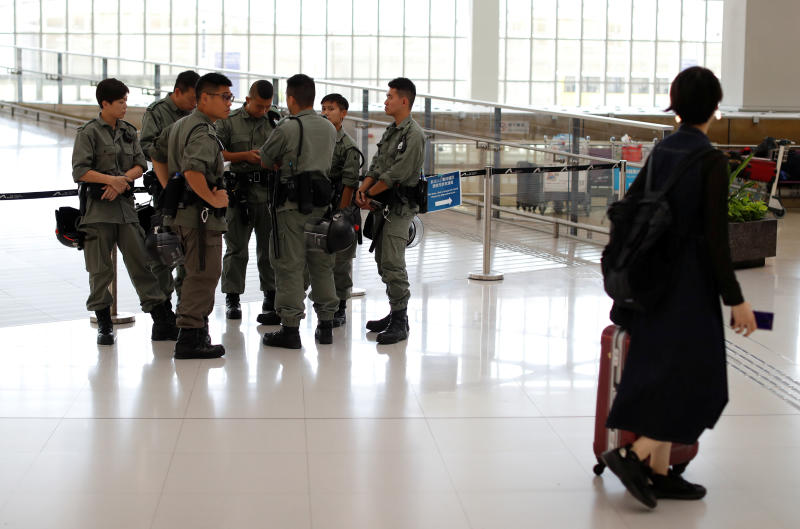Hong Kong International Airport lost close to 1 million passengers in November, the steepest numerical drop in any single month since violent anti-government protests began in the city, official figures released on Sunday showed.
In the worst drop in more than a decade, the airport handled 5.02 million passengers, some 969,000 fewer in November, a drop of 16.2% compared to the same period in 2018.
The Airport Authority, which runs one of Asia's premier air transit and cargo hubs, attributed the sharp fall to a drop in arrivals, in contrast, the number of passengers transiting and departing experienced marginal growth.
"Passenger volume continued to be affected by weak visitor traffic, with passengers to and from the mainland and Southeast Asia experiencing the most significant decreases," the authority said in a statement.
Between August and November, the airport handled 3.3 million fewer passengers. October saw a drop of 802,000 travellers, September was down 710,000, and August fell 851,000. The drops equates to a reduction of 12-13%.
In June 2009, passenger traffic fell 18.9% at the height of the global financial crisis.
The slump caused by the effects of the protest have been far-reaching, with the airport's passenger numbers growing in the first half of the year — up 1.03 million in the year to July against the same period of 2018.
To date, the airport has processed 65.8 million travellers. At the same point up to November 2018, the figure stood at 68.1 million.
The decline in passengers has already surpassed the worst annual expectations. The authority had forecast just a 2 million drop in travellers, that figure is now likely to be closer to 3 million.
The authority said it had seen a 6% rise in transit traffic, while outbound Hong Kong resident travel grew 5 per cent in November. It did not specify the drop for inbound passengers.
Hong Kong's largest airline, Cathay Pacific, is targeting connecting passengers who do not want to stop in Hong Kong, as the carrier offsets reductions in inbound and outbound travel.
To do this, Cathay Pacific, which relies on almost half its passenger mix on connecting passengers, has wooed transit travellers with even cheaper airfares.
November was also the biggest month yet for airlines cutting back in and out of Hong Kong, with close to 10% of scheduled seats removed through cancelled flights and routes, according to data from the International Air Transport Association.
Last month, Cathay Pacific said its capacity for November and December would be between 6 and 7% lower in response to weaker passenger demand.
Mainland carriers led the sharp pullback, with the likes of Xiamen Airlines eliminating the bulk of its 26 weekly flights, while China Eastern scaled back Shanghai Pudong-Hong Kong flights to 32 from 56 a week.
November was equally tough for Hong Kong Airlines as the trading conditions pushed the city's third largest airline to the brink of collapse, as it slashed more services to stem its losses.
As the Airport Authority noted, travel from China was very weak as citizens from the mainland steer clear of the civil unrest in Hong Kong. Cathay Pacific is also a victim of the boycott of mainland tourists and simmering punishment from China's top civil aviation regulator.
Outside the seasonality of the post-Lunar New Year travel period, November typically is one of the quieter months of travel for the year, but the extent of the protests worsened the situation.
Also amid the US-China trade tensions, cargo volumes continued to fall, down 3.4% to 450,000 tonnes, in a traditionally peak period for freight.
Hong Kong's airport may see a 7 to 8% drop in passenger volume through fiscal 2020, ending March 31, because of fewer visitors amid social unrest, according to S&P; Global Ratings. It also penned in a tepid zero to 2% growth in the following two years linked to the city's GDP growth.

